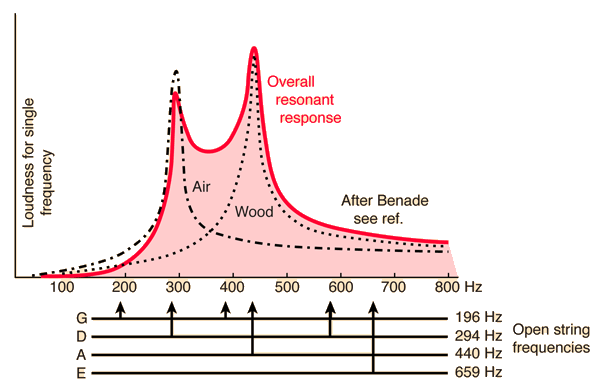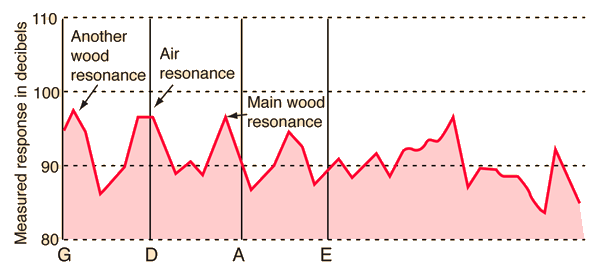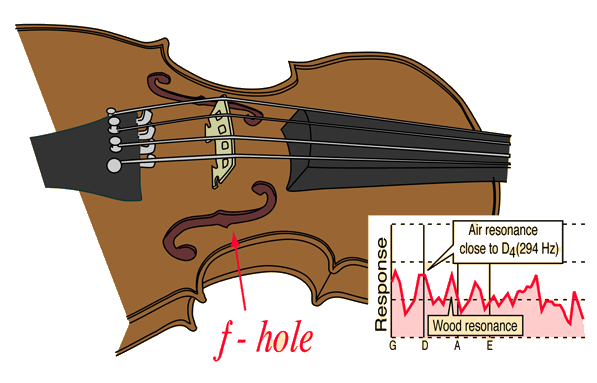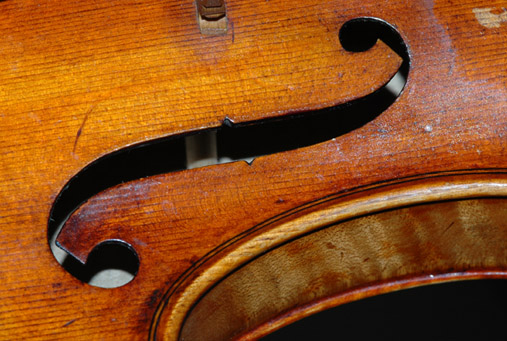Violin Resonances
Benade's resonance curve for a violin suggests that the main air resonance would enhance the D string and that the main wood resonance would enhance the A string. It should be compared with Hutchins' measurements for a Stradivarius.

Benade's general resonance curve for a violin which is based on Schelleng's calculations, which he states have been verified by experiment. They are not meant to represent a single, specific instrument, as I understand it, but to give a typical behavior. It is interesting to note that the overall resonance curve is not a simple superposition of the air and wood resonances, which is reasonable if variations in phase caused their effects not to consistently add. The air and wood resonances shown are surprisingly sharp.
| Hutchins' resonant curve |
String instruments
Musical instruments
Reference
Benade
Ch.24
Schelleng
| HyperPhysics***** Sound | R Nave |


